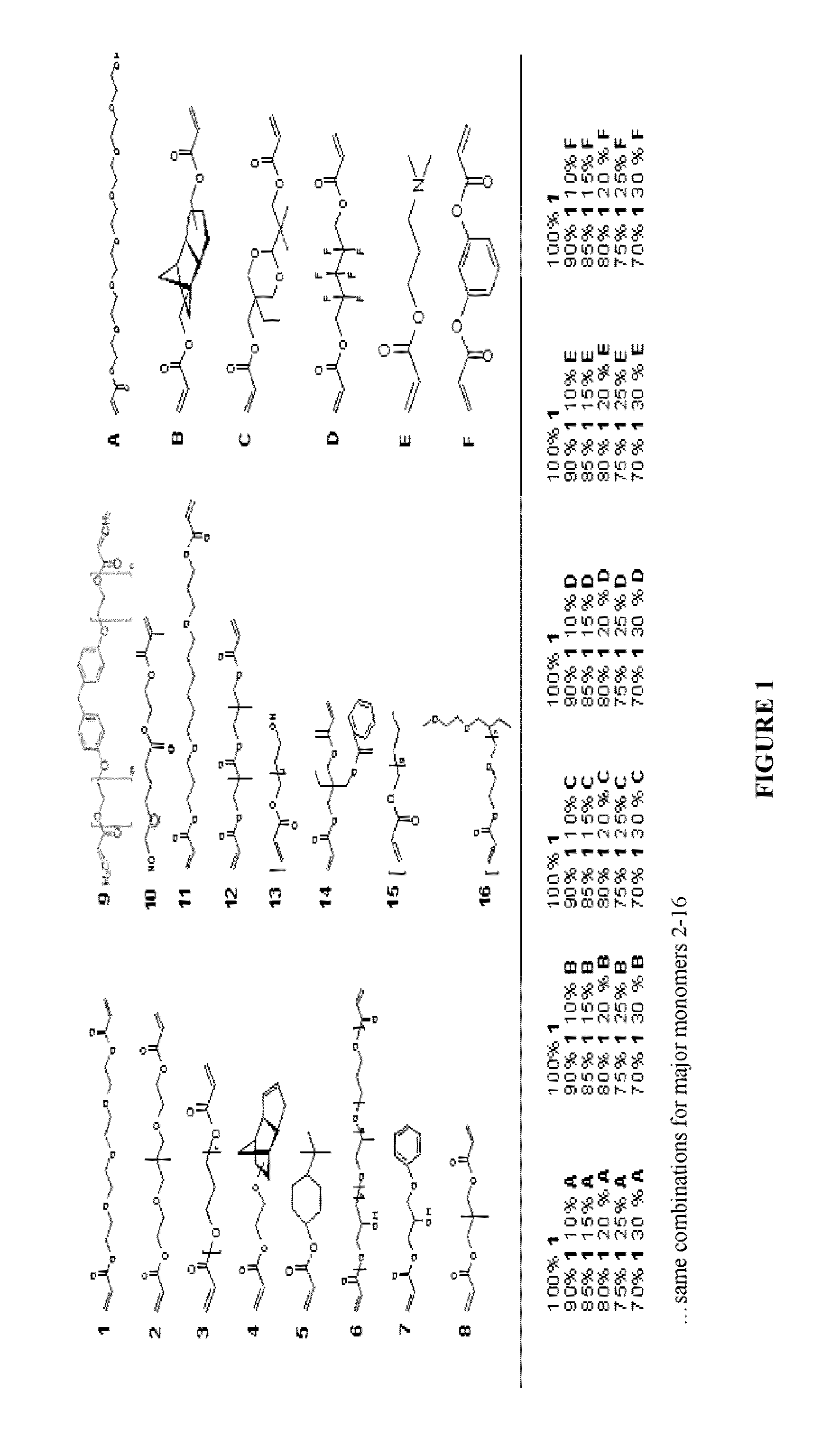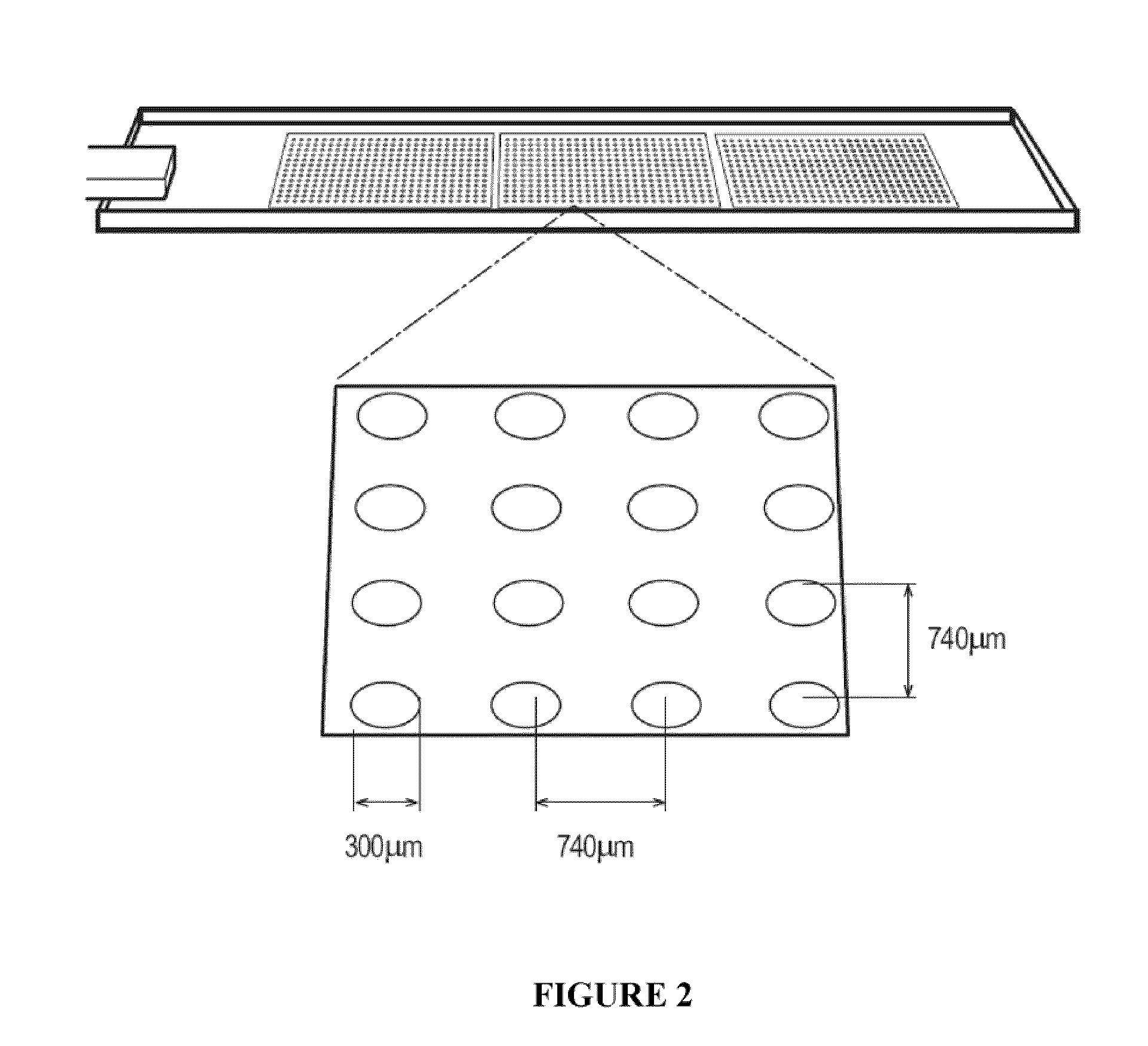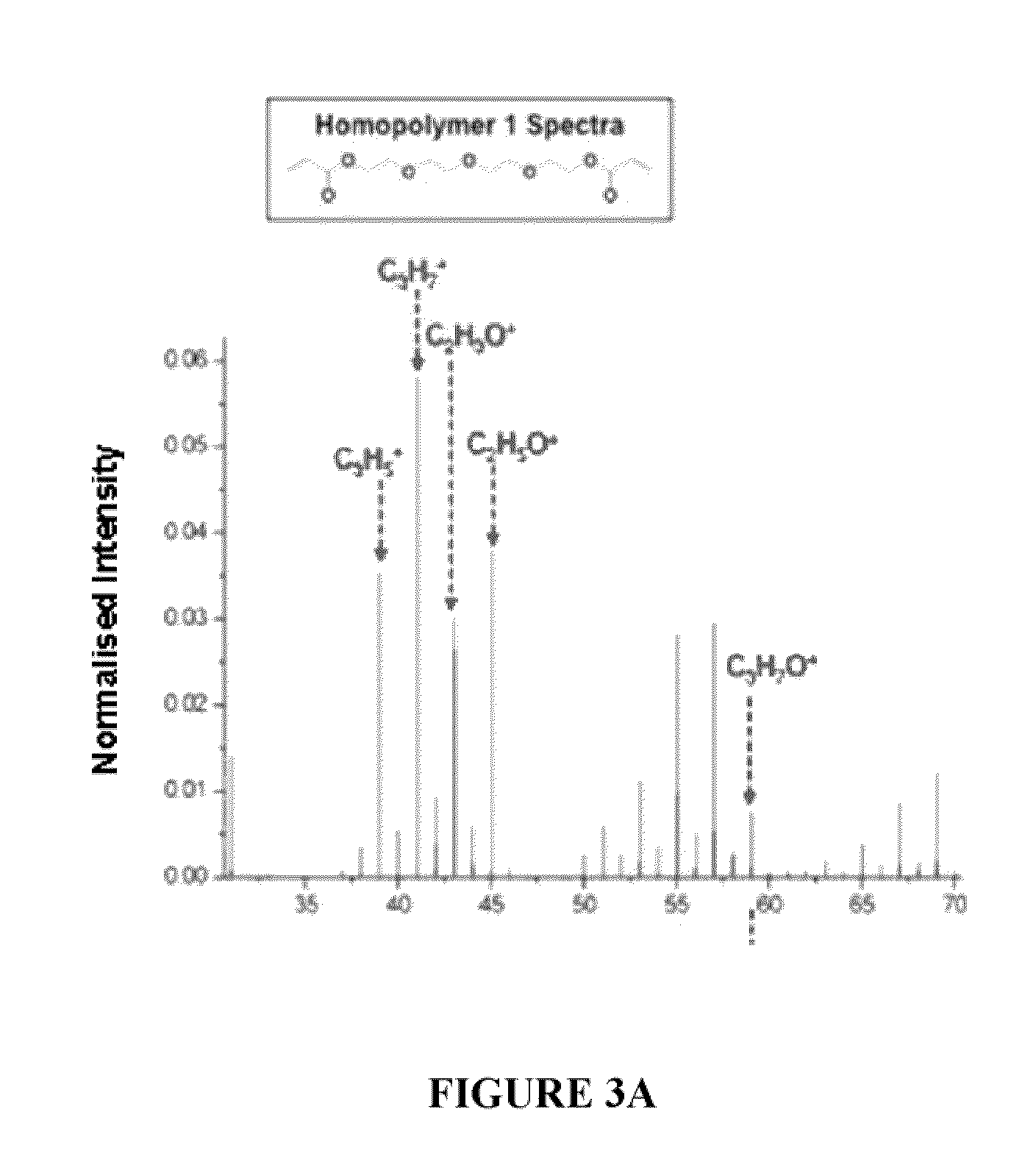Substrates and methods for culturing stem cells
a stem cell and substrat technology, applied in the field of culturing mammalian multipotent and pluripotent stem cells, can solve the problems of inefficiency of current methods for cloning stem cells, poor definition of genetic manipulation and therapeutic purposes, and accompanied by safety issues, so as to improve the efficiency of stem cell culturing.
- Summary
- Abstract
- Description
- Claims
- Application Information
AI Technical Summary
Benefits of technology
Problems solved by technology
Method used
Image
Examples
example 1
High Throughput-Screening of Substrates or “Hit” Polymers that Support Cell Growth
[0078]Human pluripotent stem cells (hPSCs) include human embryonic stem cells (hESCs) and human induced pluripotent stem cells (hiPSCs), and the in vitro culture systems for the long term maintenance of hESCs and hiPSCs are remarkably similar. The screening reported here was conducted by using a well established hESCs line (BG 01) in an effort to identify polymer microspots that could be used for a range of hESC and hiPSC lines. A high throughput-based approach was employed to engineer new culture substrates that could be used to clonally expand human pluripotent stem cells in a chemically defined, xeno-free, feeder-free system.
[0079]To facilitate rapid synthesis and analysis of synthetic substrates, cell-compatible, biomaterial microarrays were manufactured.33-35 Polymer microarrays allow for rapid, nano-liter scale synthesis and analysis of libraries of polymeric surfaces on a standard glass microsco...
example 2
Qualify and Correlate Material Properties of Substrates to hES Cell Growth
[0089]All polymeric substrates in the library were characterized using high throughput techniques to quantify several materials properties: surface topographical roughness (in air, PBS, and culture medium after FBS adsorption), indentation elastic modulus (in air and fully hydrated in PBS), and surface wettability.43 Surface roughness and elastic properties of bulk material substrata have been reported to affect the behavior of adult somatic cells44,45 and adult stem cells46,47. Surface wettability—here quantified through measurements of the water contact angle (WCA)—indicates the hydrophobicity / hydrophilicity of polymer surface and has been correlated previously with protein adsorption and cell adhesion.48
[0090]To develop quantitative relationships between the colony formation and material properties, the correlation of these properties with colony formation frequency was determined using linear and nonlinea...
example 3
Validation of Cellular Performance with “Hit” Polymers
[0099]Since polymers with a moderate WCA generated from multiple acrylate groups performed best in these experiments, the homopolymer of monomer 9, a di-acrylate with phenyl groups, and the copolymer with 15-30% monomer A, a tri-acrylate, were chosen to further validate cellular performance with a collection of biological assays. “hit” arrays were fabricated where the entire polymer array is composed of one “hit” polymer (i.e., 9 or 15A-30%). The colony formation efficiency of mEFs and “hit” polymer spots was quantified based on the ratio of hES cells colonies formed on day 7 per attached hES cell on day 1 (FIG. 5). About 20-25% of attached hES cells on day 1 created GFP+, SSEA4+ undifferentiated hES cell colonies after seven days of culture on either the mEFs substrate or on the hit polymers.
[0100]In contrast, cells on vitronectin and matrigel coated tissue culture polystyrene (TCPS) exhibited predominately differentiated growth...
PUM
 Login to View More
Login to View More Abstract
Description
Claims
Application Information
 Login to View More
Login to View More - R&D
- Intellectual Property
- Life Sciences
- Materials
- Tech Scout
- Unparalleled Data Quality
- Higher Quality Content
- 60% Fewer Hallucinations
Browse by: Latest US Patents, China's latest patents, Technical Efficacy Thesaurus, Application Domain, Technology Topic, Popular Technical Reports.
© 2025 PatSnap. All rights reserved.Legal|Privacy policy|Modern Slavery Act Transparency Statement|Sitemap|About US| Contact US: help@patsnap.com



